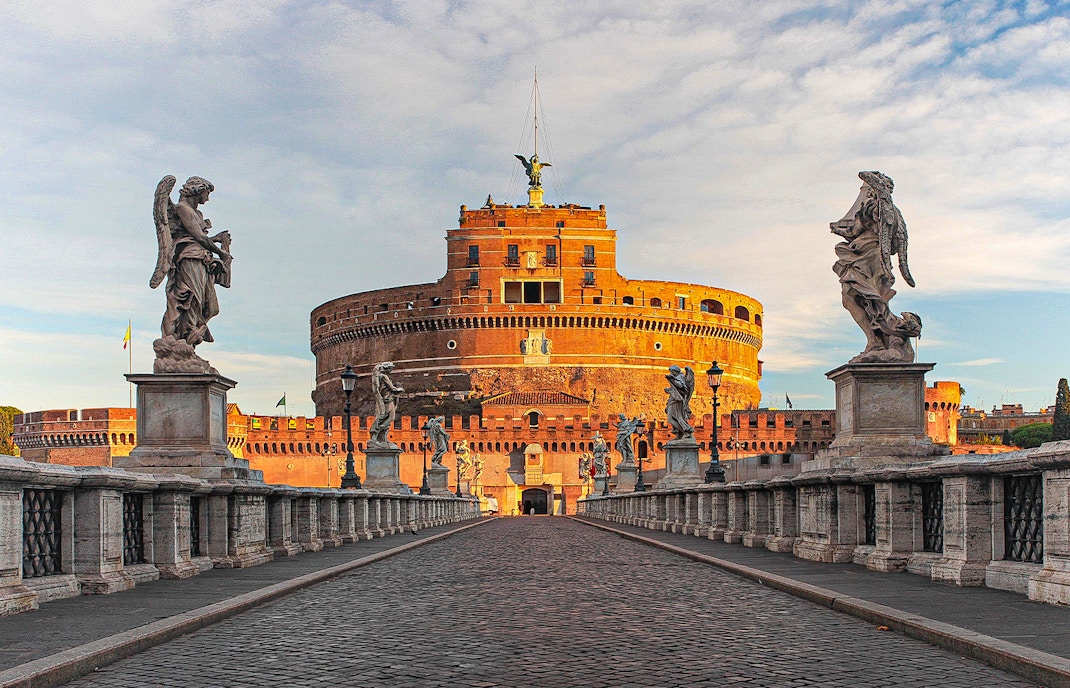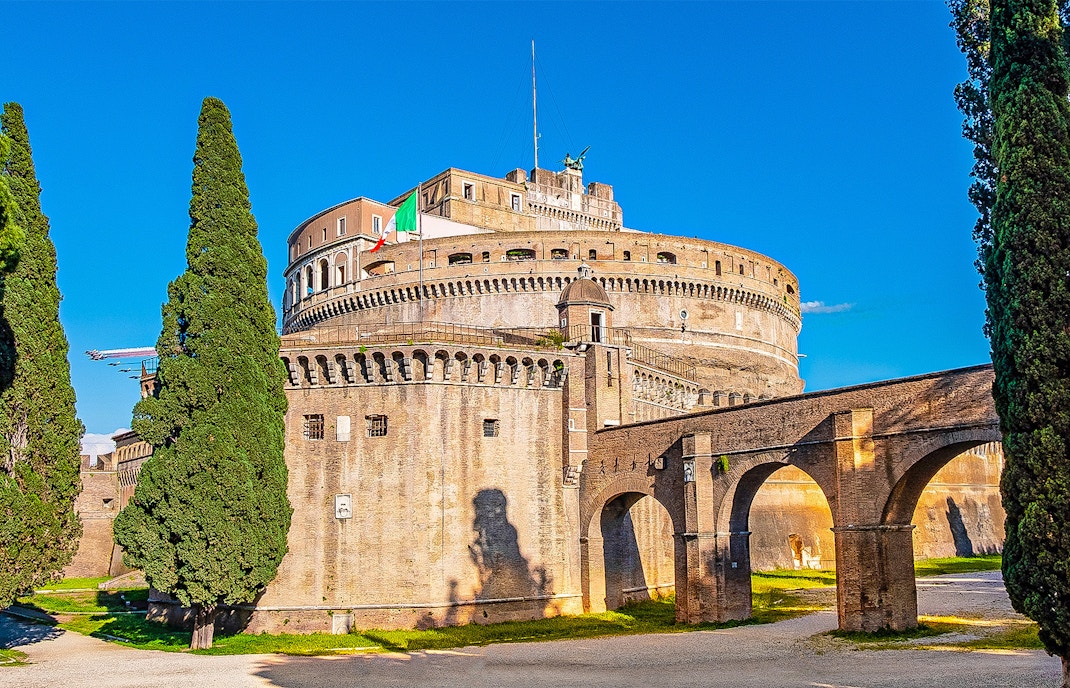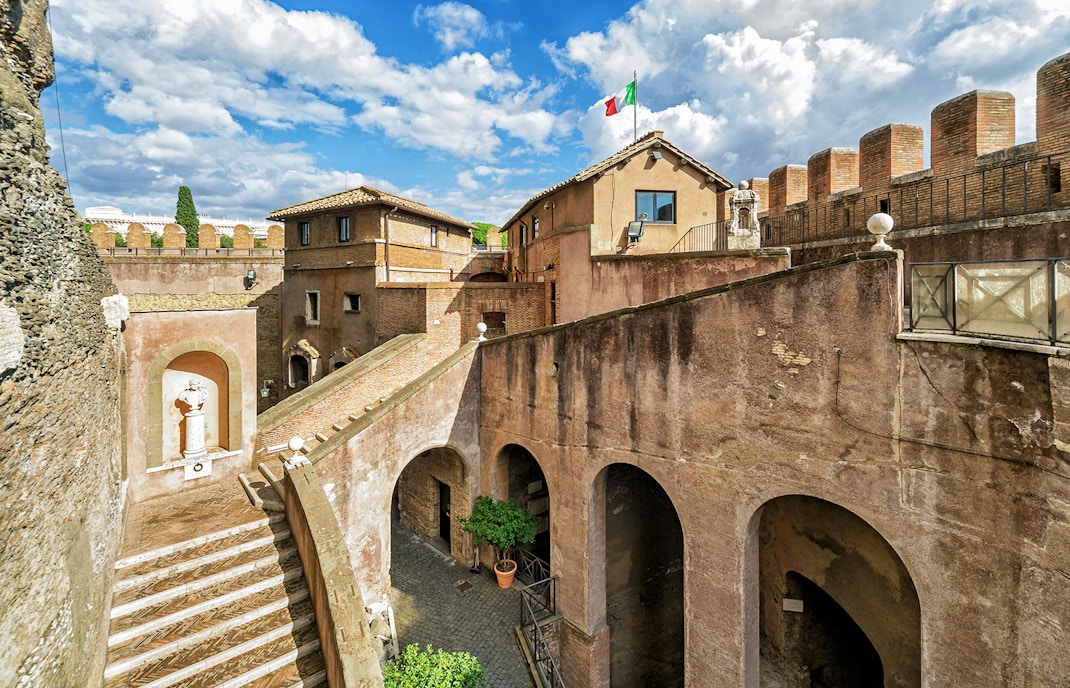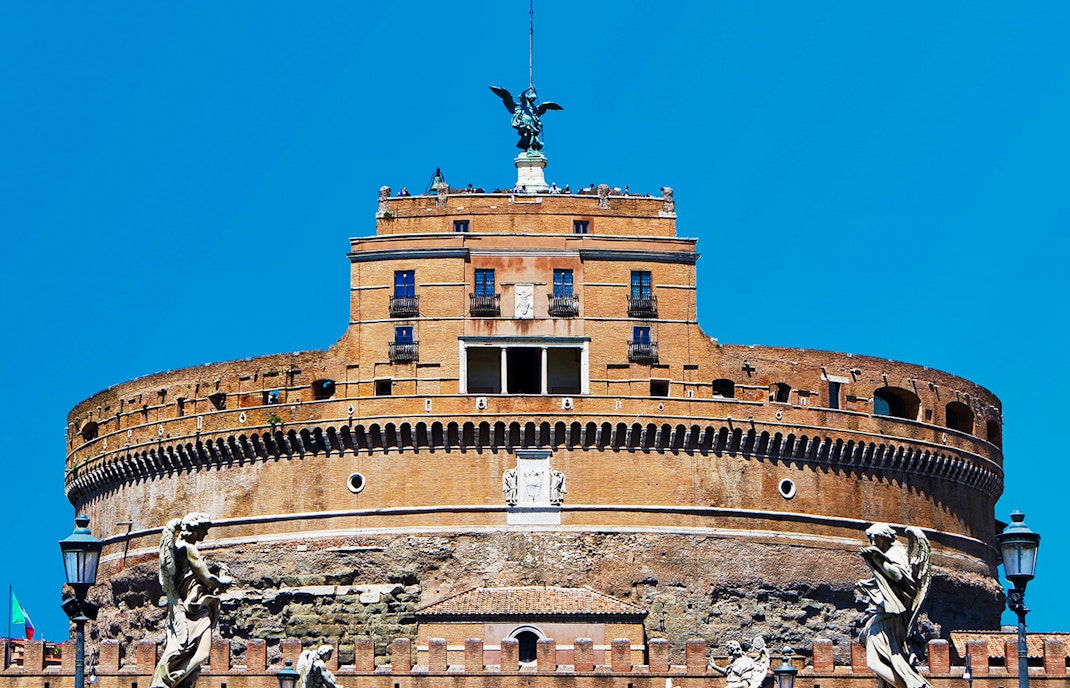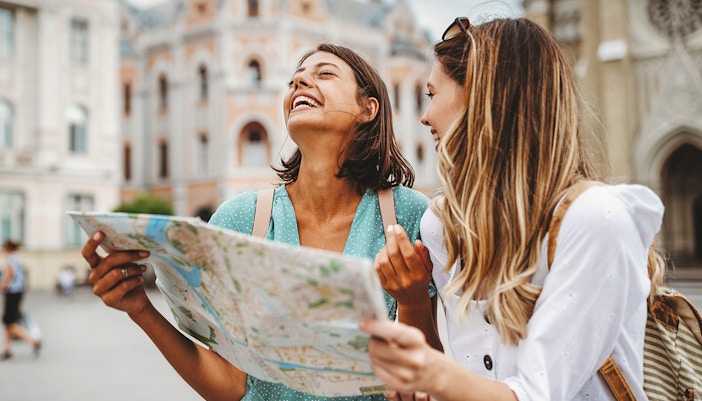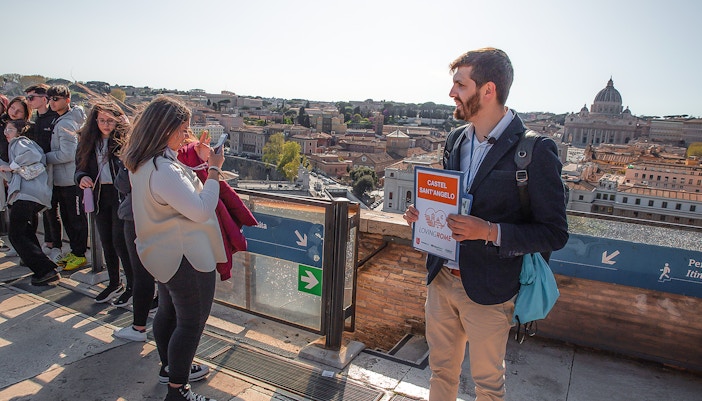135 - 139 AD
The Castel Sant'Angelo, originally known as the Mausoleum of Hadrian, was built between 123 and 139 AD under the direction of the architect Decrianus. It was designed as a mausoleum for Emperor Hadrian and his family, inspired by the Mausoleum of Augustus. The original mausoleum consisted of a square base and a cylindrical building, with a tower containing three burial chambers. After Hadrian's death, the mausoleum became the final resting place for several emperors and their families.
